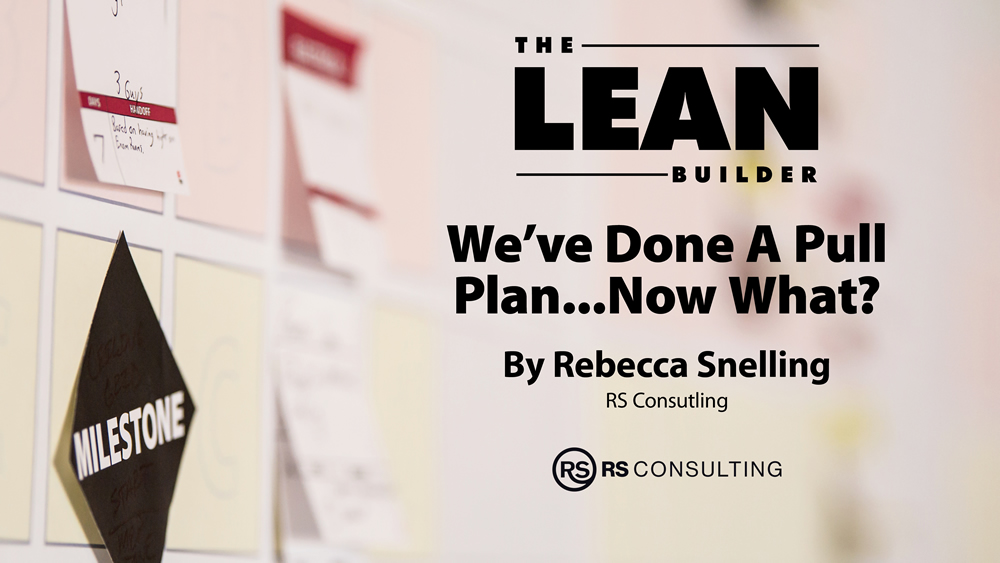Over the last 15 years, I have met people with a wide variety of experiences with the Last Planner System™ (LPS), and along with that a wide variety of opinions of the system or parts of it. A story I’ve heard often is that a team will have a pull plan, use it to update the project schedule, and then jump right back into traditional method for managing the project (not using the rest of the LPS). Then they seem surprised when they run into the same project challenges they’ve had in the past, having to overcome delays by throwing extra money and manpower at the problem. Then I hear things like “pull planning doesn’t work,” or “I participated in one once, it was the biggest waste of my time!”
Unfortunately, the project results this achieves are only part of the negative consequences that result from doing pull planning alone. Another unintended consequence that happens and rarely gets talked about is that this can create more disconnection, dissatisfaction, and decreased trust amongst the trades – exactly the opposite of what we are trying to achieve on a Lean Construction job! Trying to unwind these experiences and getting people to give it another shot can be more work than getting them to try a pull plan to begin with. Simply put, doing a pull plan as a standalone activity often creates more waste than value.
How can we make this better? Let’s walk through it together.
First the team rallies everyone and pulls them together for the pull plan. During the planning session the trade foremen get to talk, discuss, share their input, and build the plan. It is important to note that during a phase pull plan within the LPS, people are discussing what work they “should” be able to complete. They are not planning work they “will” complete, and they are not making firm promises at this time. Commitments don’t happen until the weekly work plan conversation. The reason for this is because the work being planned in a pull plan generally has too much predecessor work that hasn’t been completed yet along with a number of constraints that may not have even been identified yet. A well facilitated pull plan often results in enhanced teamwork and people feeling empowered to speak up and contribute to their planning in a more valuable way, exactly what we want to see! Now let’s build on that!
If we want to nurture and grow the teamwork and empowerment, as well as the project results, we can’t just stop after the pull plan. We need to make sure we keep the conversations open, driving more trade input as we get closer to the work. The Last Planner System is set up to do exactly this all throughout by:
- Asking foremen to identify and share constraints on upcoming work while reviewing the lookahead plan.
- Getting those constraints removed before asking the trades to commit to work shows the trades that we respect them, and we want to make it easy for them to make reliable commitments.
- Getting foremen input as they negotiate smaller handoffs between trades as they get closer in time to the execution of the work.
- Empowering foremen to make commitments weekly and daily on the work they’ll be completing.
- Enabling foremen to create and foster a culture of accountability as they move forward in planning and delivering their work, checking in on a daily basis with each other.
- Offering the team a baseline in which they can improve their reliability together.
When I hear about teams who just want to do a pull plan it tells me they don’t yet see the bigger opportunity and they are typically looking for a quick fix to a problem. That’s not the goal of the Last Planner System; it is not a quick fix or a silver bullet.
The Last Planner System is about bringing people together, helping them coordinate their work, fostering reliability, and enabling them to problems together — all leading to better teams and better project outcomes.
For more from Rebecca and RS Consulting, please visit RebeccaSnelling.com.









